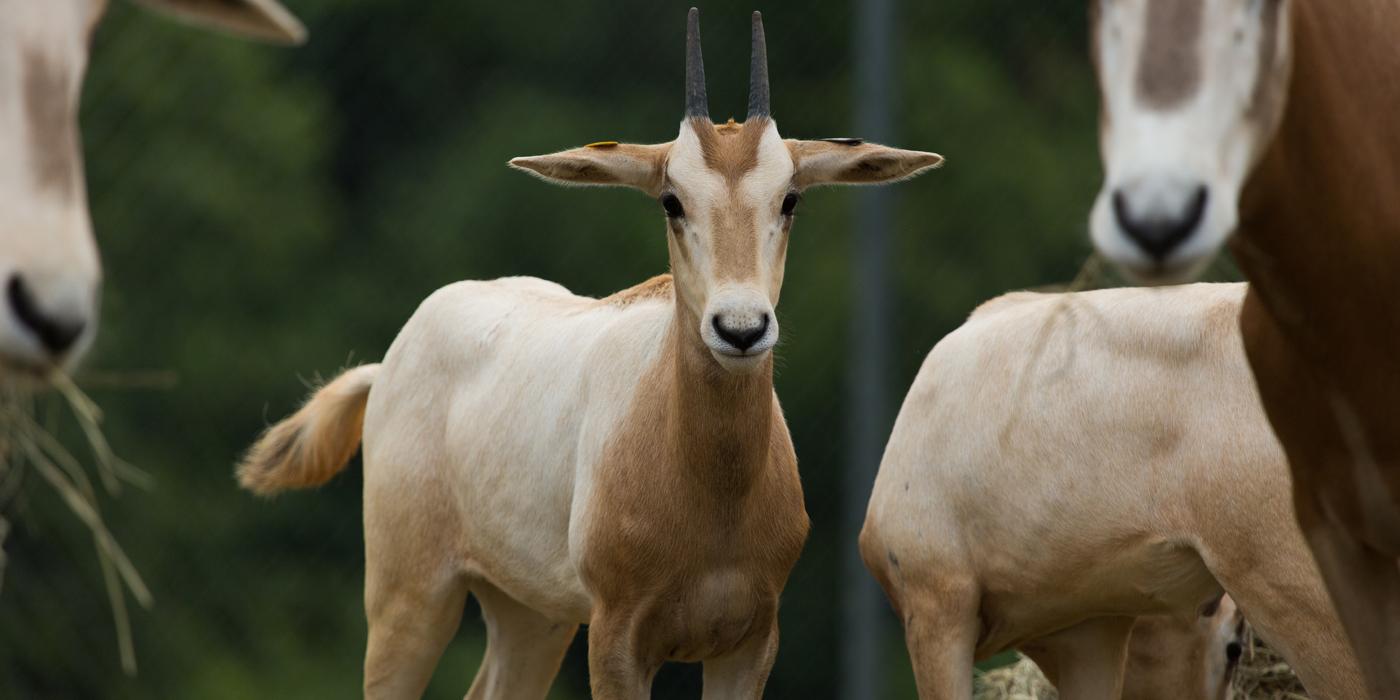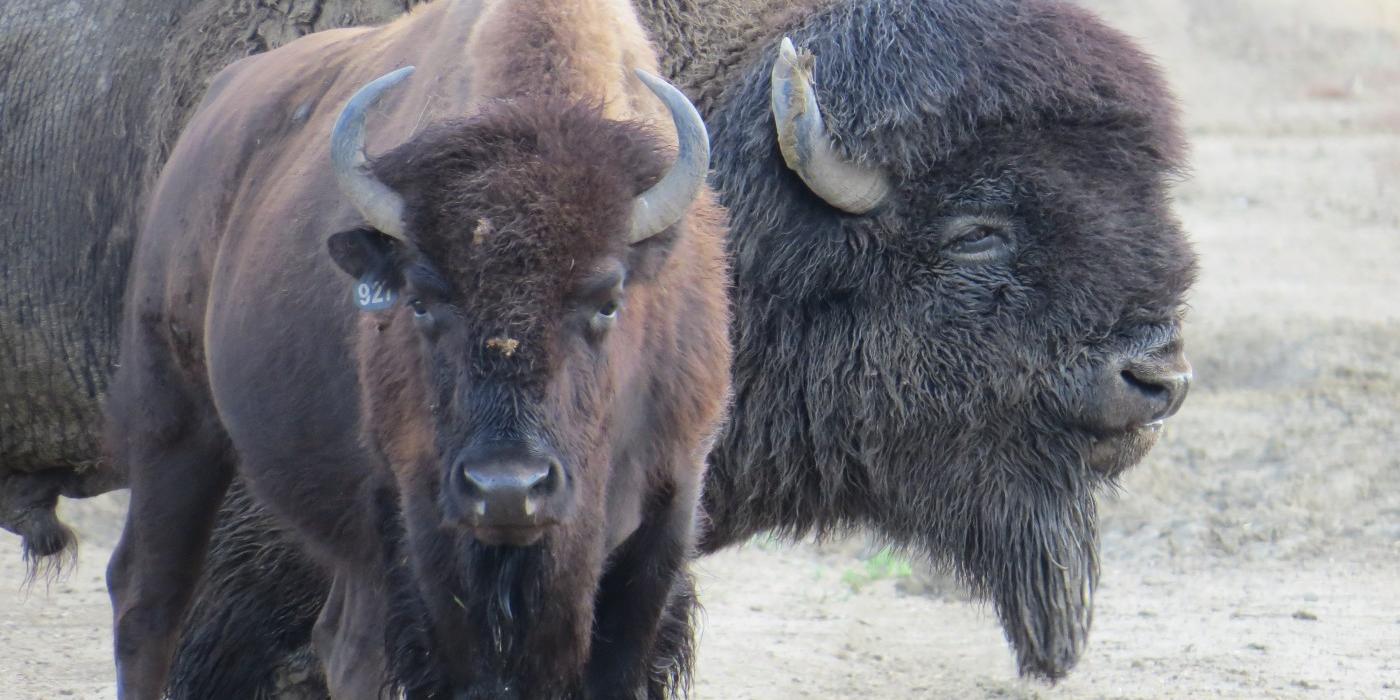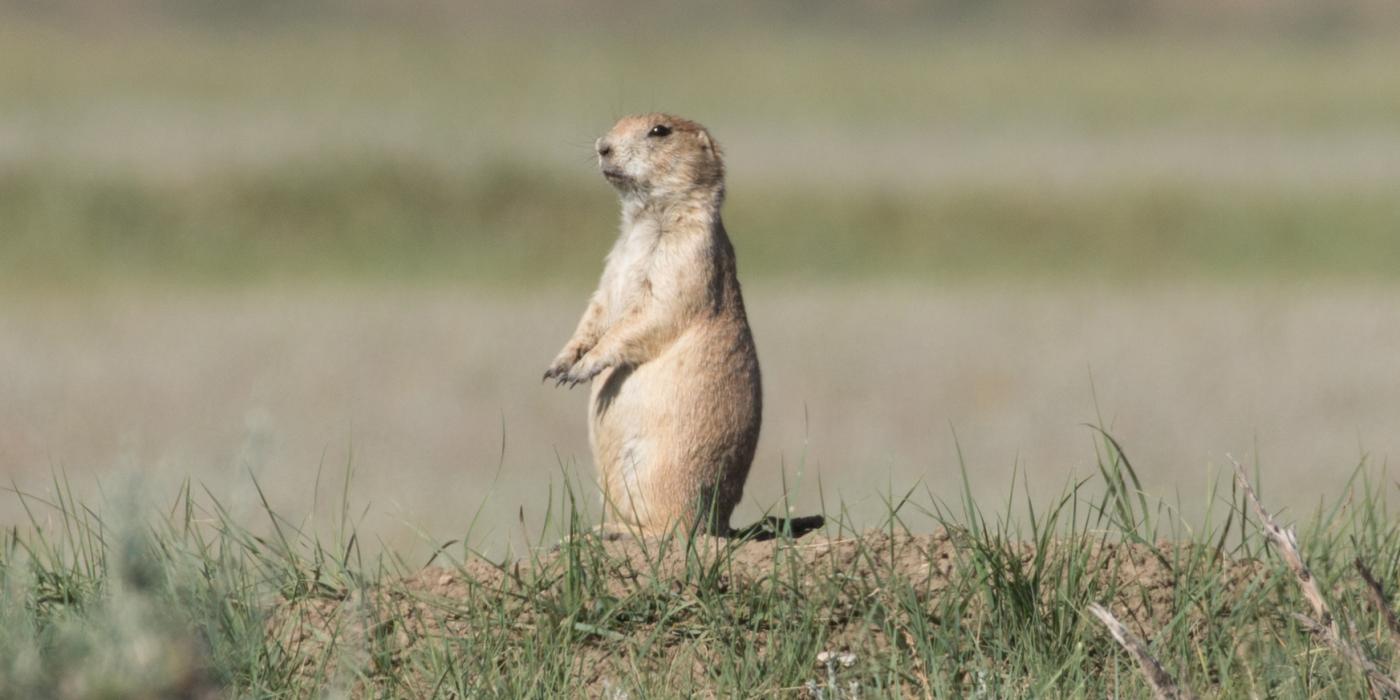Vote to Name Our Two Scimitar-horned Oryx Calves at the Smithsonian Conservation Biology Instiute
Vote Celebrates One-year Anniversary of Species' Reintroduction to the Wild
8/23/17 Update: Votes are in! Meet Savannah and Sinjah, named in honor of the anniversary of the scimitar-horned oryx reintroduction to the wild!
We’re celebrating the one-year anniversary of the reintroduction of scimitar-horned oryx to the wild! As part of the celebration, we’re asking for help naming two of our scimitar-horned oryx calves at the Smithsonian Conservation Biology Institute in Front Royal, Virginia. The calves, a female and a male, were born June 2 and June 9, respectively. They represent hope for the future for a species that went extinct in the wild in the 1980s, and are ambassadors for SCBI’s efforts to help restore the species to the Sahelian grasslands of Northern Africa. Cast your vote for your favorite names in our Twitter poll!The names are:
Aida—meaning “one who returns.”
Abéché—a town near the release site in Chad.
Savannah—scimitar-horned oryx live in grassland habitat in Northern Africa.
Sinjah—a city in Sudan, a country where scimitar-horned oryx originally ranged.
Amal—meaning “hope.”
Nadir—meaning “rare” or “precious.”
The Scimitar-horned Oryx Reintroduction Project is led by the Environment Agency—Abu Dhabi (EAD) and the government of Chad. On Aug. 14, 2016, after acclimating for several months in a large pen at the remote Ouadi Rimé-Ouadi Achime Game Preserve in Chad, the gate to the pen was opened and scientists and their partners waited to see if the herd of 21 scimitar-horned oryx that had spent the past four months inside would venture out into the wild. The next day, 19 of the oryx stepped outside the pen and have been living in the wild ever since. The remaining two animals followed the larger group later. In the year since the original group was released, two more groups have been released bringing the number of wild oryx to 90. However, even in the wild scientists and rangers are still watching over them.
SCBI scientists and Zoological Society of London scientists are monitoring the oryx remotely with satellite GPS collars. Jared Stabach and Katherine Mertes from SCBI’s Center for Conservation Ecology have traveled to Chad to fit oryx with collars. The collars will stay on the animals for about two to three years before falling off. The data they collect is the first-ever for wild scimitar-horned oryx. Some collars transmit data every hour and others only transmit once a day. They tell scientists much more than where the animals are. They tell them about their behavior and their habitat. Stabach and Mertes can log on to their computers and see in real time what each oryx is doing.
They are learning where the oryx go seasonally, how far they travel, whether they stay together or disperse into different social groups, and even if a poacher has taken an animal. The collars also tell scientists the temperature where the oryx are and the direction they are moving their heads. This information tells scientists how much time the oryx spend avoiding predators and eating.
Meanwhile, local wildlife experts and rangers trained by Sahara Conservation Fund and EAD are monitoring the oryx in the field and organizing community outreach programs about the oryx. Scimitar-horned oryx were hunted to extinction and killed during times of civil unrest in Chad and neighboring regions.
SCBI scientists are hoping to fit future candidates for release with video collars. The video recorded by the cameras within the oryx herd will help them understand the stresses and risks that reintroduced animals experience. Video collars will also help monitor animals living in very remote areas that are not easily accessible by roads. The cameras will tell scientists even more about oryx health, social competition and environmental dynamics.
The reintroduction program is working to build a self-sustaining population of 500 wild oryx during the next four years.
Related Species:




